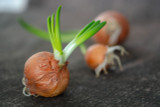Benefits Of Growing In Coconut Coir & How To Do It
Growing in coconut coir is becoming an increasingly popular choice for those who enjoy using hydroponic growth mediums. If you're new to hydroponics, there are a ton of advantages to growing with coconut coir that you can and should take advantage of.
You'll learn pretty much all there is to know about coconut coir in this guide, including what it is and how coco coir pallets can be beneficial for your gardening endeavors!
What is Coconut Coir?
First, we want to go through what coconut coir actually is.
In the past, the coconut husk was viewed as a non-usable part that would be disposed of when coconuts were harvested for their delectable meat and juice.
The coconut seed's outer layer and everything in between are referred to as coconut coir. Coir is made up of two different kinds of fibers: brown and white. Brown coir, which is much stronger but less flexible, is made from mature, ripe coconuts. White fibers, which come from unripe coconuts, are far more flexible but considerably weaker.
The majority of coconut coir used in hydroponics is brown coir since it goes through further processing after being harvested.
There are amazing benefits to using coconut coir in your garden. Here are just a few to take note of!
Good Step-up from Soil Gardening
As the two mediums resemble one another so much, growing in coconut coir may feel similar to growing in soil.
A fully hydroponic garden is possible, and it can resemble a dirt garden in appearance. The only difference is that you would water your coconut coir garden with water that has been enriched with nutrients rather than just plain water.
Retains Moisture and Retains a Favourable Environment
Coconut coir is one of the most effective growth media for water retention out there. Your plants' roots will never become dehydrated because it is capable of absorbing up to 10 times its weight in water. Also, there is a lot of growing media for the roots to move through, encouraging the formation of strong roots.
Environmentally Safe
Although some are fans of utilizing sphagnum peat moss in their gardens, there’s no disputing the environmental risks that peat moss brings. Coconut coir doesn't have these issues.
It may be used more than once, unlike peat moss, which breaks down with time. It’s also more environmentally friendly, as it is a repurposed waste product from a renewable resource, unlike the peat bogs where we get peat moss from.
More Straightforward than Conventional Hydroponics
If growing hydroponically is new to you, coconut coir is an excellent first step. You may practice the principles of hydroponic farming without having to buy or build a hydroponic system and undertake all of the care that it demands. Coco pellets can hold more water than peat pots can, making growing with them an overall better experience! As a result, you'll also encounter fewer dried-out seedlings.
How to Use Coconut Coir
Add warm water to a tray filled with coconut coir pellets to help them "grow." After adding seeds to the whole, gently cover or squeeze the coir. Position it in a place with plenty of sunlight and maintain its moisture.
By providing your new garden with the ideal nutrient-rich and moist soil that seeds need to sprout, you can make gardening a breeze. Kickstart your vegetable garden today with this pack of assorted vegetable seeds and coco coir pallets!
Recent Posts
-
The Secrets To Growing Radishes In Containers
Container gardening is a popular way to grow vegetables like radishes. Growing radishes in container …26th Jun 2023 -
How To Successfully Grow Onions From Seeds
Many recipes use onions to give a strong taste and smell. Growing onions from seeds is better than b …26th Jun 2023 -
How To Grow Radishes At Home: A Step-By-Step Guide
Growing your radishes at home can be a rewarding and delicious endeavor. These crispy and spicy vegg …26th Jun 2023





